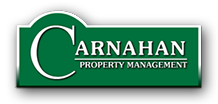When it comes to new construction, today’s building codes require a level of energy efficiency, making them greener than older buildings. But what about your existing rental properties?
Going green is trendy; it has been for several decades, and likely will be for decades to come. Sure, it’s good for the environment, but there are also more tangible benefits to going green. It makes your property more attractive from an investment point of view, adding to resale value. A green property also costs less to run – by reducing your monthly operating costs, you can improve your cash flow.
Another financial advantage to going green is the effect it has on tenancies. Green buildings attract tenants more quickly, reducing vacancy rates. There are also less tenant turnovers. Since green apartments tend to be more comfortable in both summer and winter (while costing less in utilities), tenants are happy. In the end, many tenants are willing to pay a higher rent if it means demonstrably lower monthly energy bills and reducing their carbon footprint.
Let’s look at a few green tips to reduce your rental property expenses. Don’t forget to keep your receipts as most costs are tax deductible.
Appliances
Start with the biggest energy hogs to maximize your returns. Old dryers and refrigerators often use the most power, so consider changing those first. Washers and ovens can always be updated later on. Energy Star appliances will reduce your monthly electricity bill and pay for themselves over time.
Look into switching from electric to natural gas for your hot water tanks and heating systems. Natural gas is more efficient and less expensive, allowing you to recoup the purchase price quickly (although the case can also be made that natural gas is a fossil fuel, while electricity can be obtained through renewable sources).
Lighting
Switching from incandescent bulbs to compact fluorescents or LEDs can significantly reduce your electric bill. Motion detecting lights can also reduce energy costs, since lights only turn on when needed. They could be used to replace some of the light fixtures in common areas such as hallways, stairwells and outside, reducing the number of lights that are always on.
Water
Low flow toilets, shower heads and faucet aerators can reduce water use. Some green buildings are incorporating rain water systems to irrigate or water lawns and plants. Using native plants can also reduce the need for watering, as they are more tolerant to your area’s climate.
Heating and Cooling
Having tenants pay for their own heating and cooling costs is the best way to reduce your expenses; it also encourages them to conserve energy. If you must pay for tenants’ utilities, you can offer them tools to help reduce your costs. Individual programmable thermostats, for example, can lower heating costs if used properly. Double glazed windows and weather stripping reduce heat loss.
If you have old boilers, calculate the cost of updating them versus the return on investment. If you plan to keep the property for many years, you may come out ahead in the long run.
Planting trees around your building can also help to reduce heating and cooling costs. Shade your heat pump and air conditioning units to help them run efficiently. Plant leafy or deciduous trees on the west and south sides of buildings; this will block the summer sun and keep the building cooler. Once the leaves fall, the bare trees allow the sun to warm the building for the winter months.
Managing Expenses
Going green doesn’t have to be done all at once. It may make sense financially to spread major expenses over several years. Your accountant can help you decide how to maximize your savings for tax purposes.
Watch for current and upcoming government incentives. Rebates, grants and tax credits are sometimes offered to help offset the initial expense of upgrades like low flow toilets or energy efficient appliances. With a little research, these programs can greatly reduce your out-of-pocket expenses.
Leading by example and promoting an environment-friendly philosophy helps to save the planet while improving your cash flow. Going green can be a win-win. What’s your favorite green tip for income properties?



